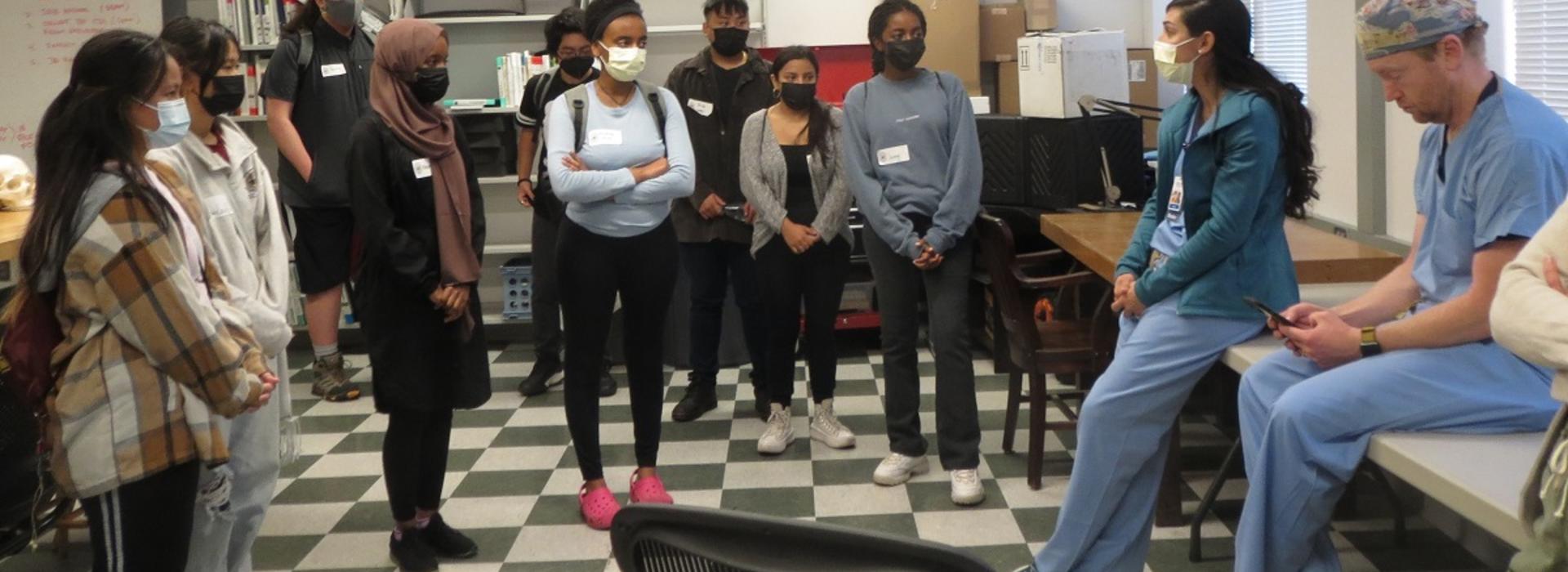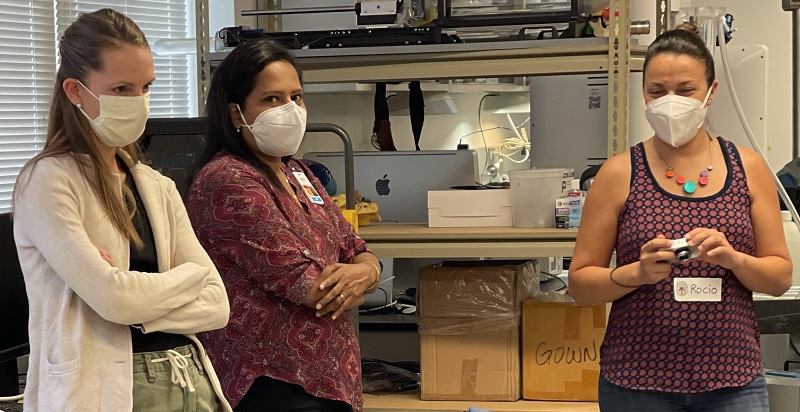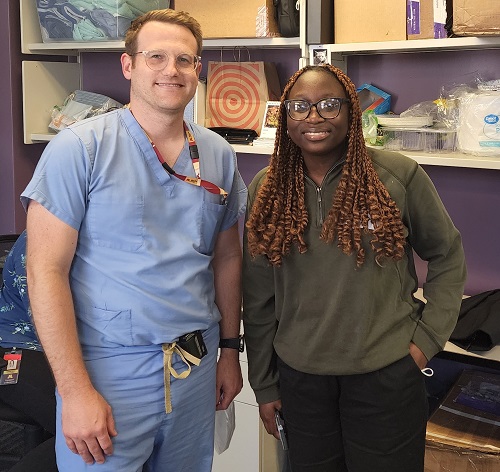
Neurosurgery Department opens its doors to a summer program for underrepresented high school students
For the first time ever, the Neurosurgery Department participated in Go4Brains, the U of M’s week-long neuroscience summer camp for underrepresented high school students. The program’s mission is to work towards rectifying inequalities in education and increase diversity in the field of neuroscience and neuroscience nursing, to improve neuroscience research and clinical care, and to help improve equity in academia and in health outcomes.
According to the Go4Brains website, “One of the ways we choose to do this is through the high school program, as these students have not yet committed to a career path and provide a rich talent pool from which to draw. We seek talented, motivated high school students who are curious and excited about learning.”
Twelve high school students from underrepresented minorities from throughout the metro area were chosen and given a stipend to attend each day of the camp held July 11-15, 2022, from 8 am to 4-5 pm.

The Neurosurgery Department’s portion of the program was hosted by neurosurgeons Carolina Sandoval Garcia, MD; Andrew Grande, MD; and David Darrow, MD; by Neuroanatomy Lab Director Sean Moen, and by Nurse Practitioners Emma Venteicher, MS, FNP; and Seena George, MSN-FNP. (Pictured here from left to right: Venteicher, George and Rocio Gomez-Pastor, PhD, Department of Neuroscience.)
Sandoval, who was part of the Go4Brains planning committee, wholeheartedly believes in its mission. “You can’t know what a possible career is like until you are exposed to it,” she said. “It’s so important to show students like these that it can be done … to tell them, here’s how I got where I am today, here is what I wish I’d known way back when. I’m motivated to do this kind of thing because it’s a way to pay it forward.”
During the week of the camp, two of the department’s laboratories — the Chen Brain Tumor Lab and the Herman Darrow Human Neuroscience Lab — hosted one student each for an afternoon. In addition to lunch, the lab teams provided tours and an educational experience designed specifically for the students.

Onyinyechukwu Udemezue from Spring Lake Park High School (pictured here with Dr. Darrow) visited the Herman Darrow Lab. While there, she was introduced to Zeto, a wireless electroencephalogram (EEG) system. “We were showing her what her brain signals looked like while she performed certain tasks,” said Darrow. “It demonstrated what we can do with noninvasive electrophysiology.”
During the morning spent in the Neuroanatomy Lab, the Go4Brains team provided an overview of the neurosurgical field and discussed what it’s like to attend medical or nursing school. “The students were really bright and engaged and had a lot of questions about what made us decide to do what we do,” said Sandoval. The highlight of the visit, however, was Grande and Moen’s 3D brain anatomy demonstration.
“I think events like these are critical because many people find their passion early in life, especially those who go into medicine or biomedical engineering,” said Darrow. “Early exposure is critical, and we know that people of color disproportionately do not have those exposures. And they don’t have models in their communities that they can aspire to. That’s changing, but statistically, it’s still extreme, especially for a field like neurosurgery. The pipeline for going into our specialty is extremely long. If you’re going to make it through, you must be interested in it as early as possible.”
Sandoval received an email from one of the students after the event. “She said she has always dreamt of being a neurosurgeon,” said Sandoval. “I didn’t know until medical school what I wanted to do for residency and here’s a motivated 15-year-old who does! It’s so encouraging to see women of color saying these things. To make a difference for just one of these students is enough.”



